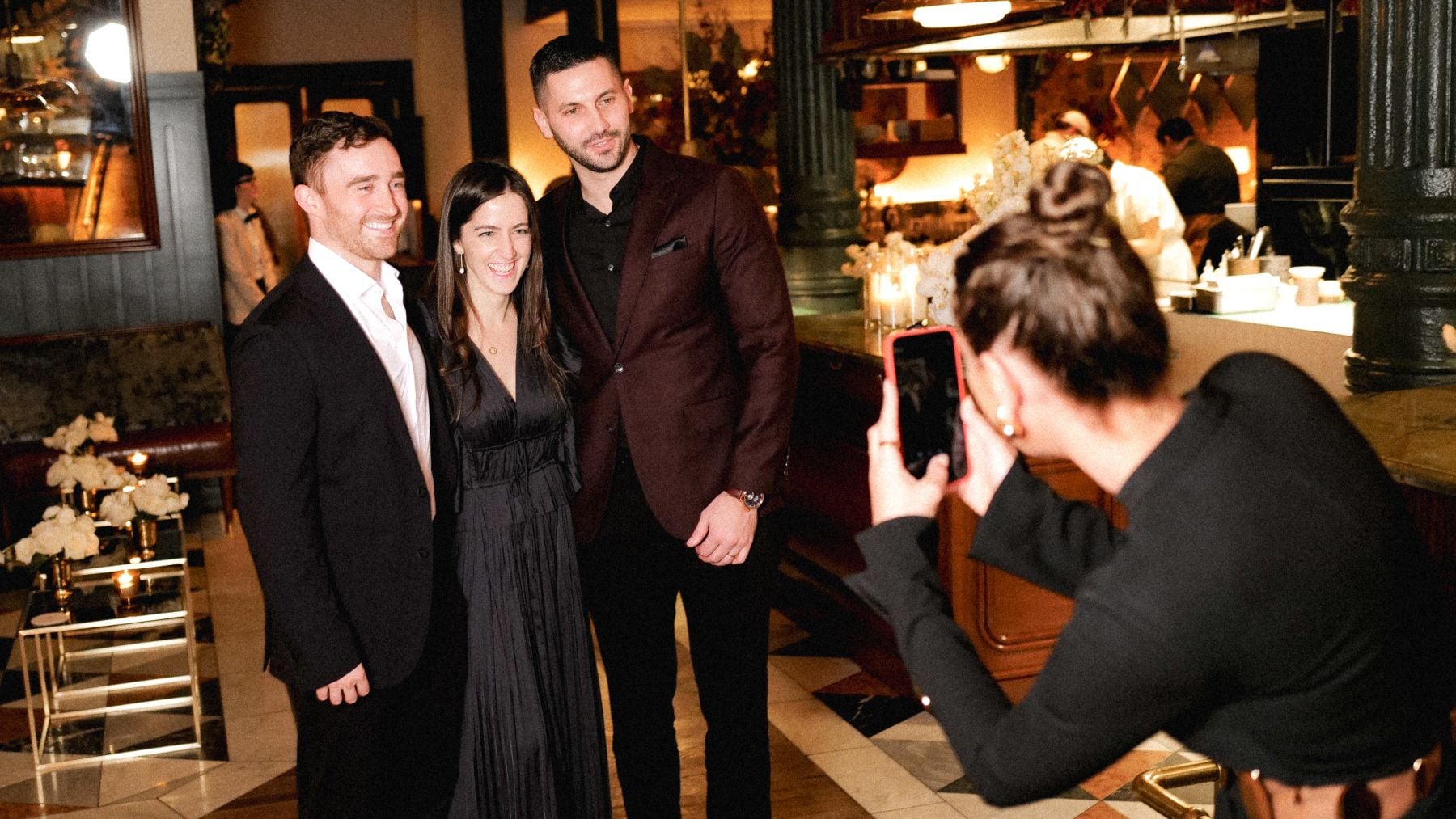
The lucrative business of helping influencers make money off their followings is undergoing its biggest shakeup in a decade, as a new entrant is making inroads with both creators and brands.
This market has long been dominated by LTK, which in 2011 essentially introduced the concept of digital creators — back then, bloggers — being paid for recommending products to their followers. Today, sponsorship deals, gifting and affiliate links, which deliver a commission when someone makes a purchase after clicking them, are a big part of the estimated $21 billion brands spend on influencer marketing annually, according to McKinsey.
But LTK is facing a challenge from ShopMy, a four-year-old platform that also connects creators with the brands they promote and the consumers that buy the products they recommend. LTK says it has over 300,000 influencers on its platform to ShopMy’s 50,000. But the latter has attracted some major talents, including the fashion influencer Courtney Grow, editor-turned-creator Chrissy Rutherford and celebrities like Jenna Lyons and Molly Sims. It’s also the exclusive partner of influencer-favourite jewellery brand Dorsey and the buzzy hair care line Crown Affair.
Now, LTK is striking back. On Tuesday, the company filed a lawsuit in US federal court against ShopMy, alleging its rival engaged in false advertising, trademark infringement and unfair competition. The suit details 16 examples of what it calls “misleading claims” in ShopMy marketing materials, mostly concerning features it says it offers that LTK does not.
Proving false advertising in court will be a “challenge,” said Emily Poler, founding partner at the law firm Poler Legal. LTK will need to demonstrate that the “statements were actually false or there’s a tendency to deceive some substantial portion of the intended audience and that deception will influence purchasing decisions.”
Still, the lawsuit is evidence of the high stakes involved in who is the platform of choice in an influencer market that doubled in size between 2019 and 2023, and is projected to continue growing rapidly, according to McKinsey.
ShopMy’s rise also reflects changing expectations for all the players involved, especially around who has access to customer data, and who controls the relationship between influencers and brands. In March, the company announced the completion of its Series A funding round, which raised $26.5 million with participation from investors including Rent the Runway founder and CEO Jenn Hyman.
“[ShopMy] is just a very sophisticated, fresh approach to affiliate,” said Sophie Krakoff, founder of the influencer management company Friends of the House Group. “They’ve created a platform that is filling all the gaps that needed to be filled.”
The ShopMy Approach
Launched in 2020 out of a project co-founder Chris Tinsley worked on as an MBA student at MIT, ShopMy’s goal was to create “a place where influencers could link everything that they were talking about,” said co-founder and chief operating officer Tiffany Lopinsky.
ShopMy has over 30,000 commissionable brands in its network, but unlike other platforms, ShopMy allows links to any products, not just brands in its network. Though influencers won’t receive commission on purchases made from brands that are not ShopMy partners, they still can see data around how many people clicked, which can be used to generate business down the line.
Content creator and consultant Lilly Sisto, who has also helped onboard brands to ShopMy as a consultant, said “it’s great to see the analytics, and then be able to send that to the brand” in hopes of forging a potential partnership.
ShopMy influencers can also directly message 350 brands, including Macy’s, Nike and J.Crew, to request gifting or pitch a collaboration. Brands, too, can message creators to offer gifts, alert them of an upcoming sale or even just say hello. This year, it also introduced a new “Lookbooks” feature, designed to automate the gifting process. Brands can invite influencers to choose products from a digital “lookbook” that is synced with their website, so the options available reflect what is in stock. Once selections are made, the order is placed like a standard e-commerce order.
“Really it’s about reducing the friction,” said Lopinsky. “If people want to buy something via recommendation from a creator, I just want to make it as easy as possible.”
Another key difference is ShopMy’s analytics. With any ShopMy subscription, a brand’s dashboard will show how many sales an individual influencer drove, and what products they sold. On LTK, brands only have access to this sort of data if they are running a paid partnership with that influencer.
“For a long time we’ve struggled to think about how we can really scale this part of our business … because we didn’t have a real analytical understanding of where we should invest,” said Alexa Buckley Roussel, the co-founder of footwear brand Margaux, which uses ShopMy. Since joining ShopMy, Margaux has quadrupled the amount of product it has gifted influencers, and plans to continue on a similar cadence.
LTK has also made moves to open up communication between influencers and brands. Its LTK Marketplace feature, launched last October, allows influencers to pitch themselves to brands for any listed campaigns.
“I want to be radically customer centric, so if someone else is doing something that I either haven’t thought of or wasn’t thinking about correctly, I see these as marketing opportunities, and it galvanises our team,” Venz Box said. “We come out stronger on the other side of it.”
To outsiders, the differences between the two rivals may seem minute. But for the brands and creators that use these platforms on a day-to-day basis, it can make for a big shift in how their businesses operate.
“You have more users at LTK, but we don’t have the transparency between brands and influencers,” said Marina Larroude, co-founder of the footwear brand Larroude, which uses both ShopMy and LTK. “We have been gravitating to ShopMy and using it more,” adding that since joining, she’s recommended the platform to “20 of my friends or more.”
ShopMy’s marketing highlights the small, but sometimes crucial differences between the two companies’ services. LTK’s lawsuit alleges its claims go too far – and that its logo was improperly used on ShopMy material.
“We recently became aware that ShopMy has made false and misleading statements about LTK’s proprietary tools, products, and services, including in false comparative advertising,” a spokesperson for LTK told BoF. “LTK’s products and services speak for themselves but we must correct these false claims aimed at misleading the market.”
A spokesperson for ShopMy said of the lawsuit: “We have great admiration for LTK and other pioneers in creator marketing. We have helped thousands of brands and creators create authentic partnerships, and remain steadfast in accelerating that pursuit.”
Catering to the Coastal Elite
Though they’re broadly competing in the same marketplace, ShopMy and LTK have found their most devoted users in different, though often overlapping, sets of influencers.
ShopMy’s client roster is heavy on capital-F fashion influencers like Jess Graves, Ilana Torbiner and Gabi Gofis, who are more likely to post about The Row than they are their latest Amazon finds. It hosted a dinner during New York Fashion Week for some of its top talent at downtown hotspot Torrisi.
LTK, which is based in Dallas and puts on an annual conference in its hometown, dominates with influencers in middle America. Venz Box says the “vast majority” of its earnings now come from outside of fashion (it hasn’t hosted a New York Fashion Week event since before the pandemic, though it says it’s planning to return in 2024).
Its app has become something of a social network all on its own — there are plenty of influencers who use it as their primary platform. ShopMy is built for influencers to share their “shops” on other platforms, like Instagram, TikTok and, increasingly, Substack. The company has no consumer-facing app and no plans to create one.
Armed with new funding, ShopMy is confident in its ability to keep growing. It wants to onboard more influencers and brands, as well as build its muscle in spaces where it’s lagged behind competitors, such as sponsored content deals. Their goal is to give creators what they want, and so far, that loyalty has been rewarded. The creators in their network, Lopinsky said, have been some of their biggest advocates in bringing on new brands.
“We’re really good at talking to people, users and brands, understanding what they want and building it really quickly,” said Lopinsky.



